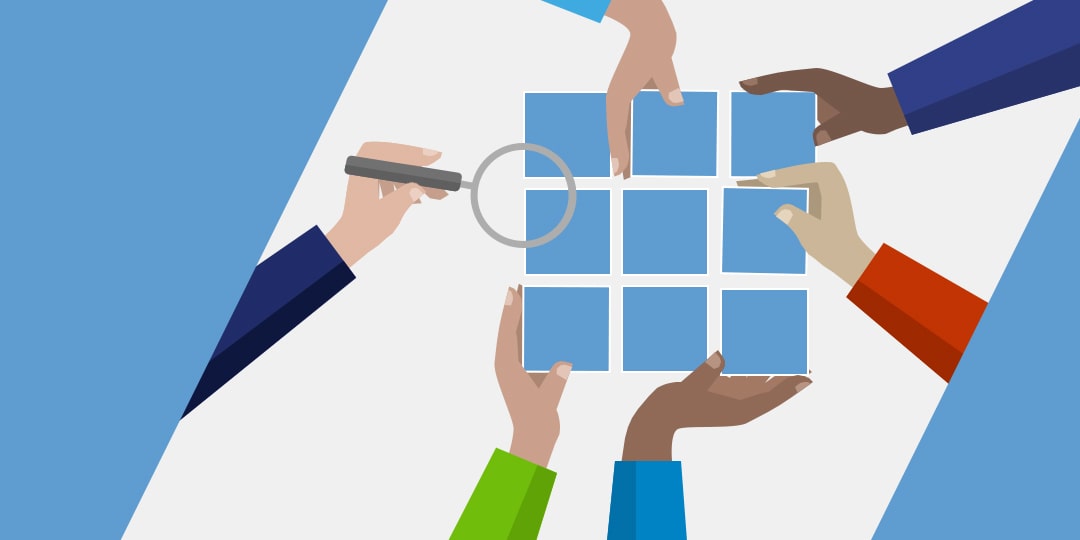- What is OLAP and why do we need it?
- Implementation Preparation
- Implementation steps
- OLAP implementation examples
- In conclusion
When dealing with data processing BI tools come into play. Nowadays they are the most reliable supporters for every data actions. OLAP system is one of them. You have to deal with huge data amounts every day? Do you want to keep company’s operation under control? Do you need to get a good profit from it? If you answered yes to these questions, OLAP system is your option.
In our blog we wrote a lot about OLAP system in general, its components and operation. But today it’s time to highlight the most important aspect of it: OLAP implementation techniques. So let’s move from words to actions.
What is OLAP and why do we need it?
One more time, what is OLAP system about? Online analytical processing is a technology for rapid execution of complex analytical queries. OLAP is a part of BI tools and represents the data in a multidimensional structure. It allows the users to consolidate, detail and rotate data in order to see and analyze it from various perspectives. Multidimensional database structure allows processing ad hoc queries rapidly, which makes OLAP tools a popular choice for business reporting.
Dimensional data organization also helps to analyze data through different operations including:
- Roll up
- Drill down
- Slice
- Dice
- Pivot
The popularity of OLAP systems nowadays is caused by their benefits:
- High speed: data aggregation and pre-computation allow executing complex queries rapidly;
- Advanced calculating: MDX language provides opportunities to choose from numerous options for data analytics and extraction;
- Convenient data representation: multidimensional data structure is convenient for simple data visualization and to analyze data from different perspectives;
- Comprehensible business terms: no additional IT help required for OLAP reports operation;
- Profit growth: despite the systems are not so cheap, they increase working efficiency and increase profit.
Let’s move from theory to practice of how to elaborate OLAR architecture and overview implementation process.
Implementation Preparation
OLAP benefits without any doubts seem to be very attractive. However, there are also some issues you can face using OLAP system. Consider these challenges before implementation:
- Lack of standardization: every OLAP vendor has its own client interface;
- Scalability: OLAP system is good for processing summary data, but not for large amounts of detailed data.
However, for some companies those issues have the back positive side and are not so critical in general.
Preparation steps before OLAP implementation are no less (if even more) important than the implementation itself. You work for OLAP and then OLAP works for you. Here are different OLAP implementation considerations:
Vision and strategy development | To choose and implement the most suitable solution your team need to define business objectives first. It is one of the most important steps as only the clear understanding of what you need and how to get it can lead to success. The next stage is also to identify the strategy. To be precise OLAP strategy should correspond an enterprise strategy and goals. Discuss those issues with your team and develop a unified concept. |
Data preparation | First of all, it is important to learn as much as possible about the system. That is why before preparing your data to be transferred into the new system, you should check OLAP data characteristics first: · OLAP data is summarized; · OLAP data is more departmentalized comparing with data warehouse which serves corporate-wide needs; · The system stores and uses less data than a data warehouse. Make sure that conditions suit you and start your data preparation then. |
Vendor and platform choice | Summarizing all the information and your requirements, it’s time to choose vendor and an OLAP system finally. The choice should be made regarding the kind of the system: · ROLAP · MOLAP · HOLAP · Other And of course, the vendor. As a little tip in this difficult choice we could offer a check list of what a good OLAP system should have: ¾ Multidimensional data representation; ¾ Summarization, aggregation, derivations and precalculation capabilities; ¾ Formulas and complex calculations in an extensive library; ¾ Time intelligence; ¾ Cross-dimensional calculations; ¾ Simple interface. |
Review | Summarize all the requirements, data and steps before implementation. |
Implementation steps
To the time implementation of OLAP applications is about to start, you already know its features and functions, significance, and considerations. The only thing to do is summarize it all up. And, if you followed all the steps we mentioned before and spent your time for an appropriate preparation – congratulations, the major work is done. Now you can start implementation process easily. Just follow our final guidelines for OLAP implementation:
Step one: dimensional modeling
Step two: select the data required for removing into OLAP system
Step three: data extraction for the OLAP system
Step four: loading data to the OLAP server
Step five: data aggregation and derived data computation
Step six: implementation of OLAP application on desktop
Step seven: user’s training organization
But how does it look in practice? Follow the next part and learn how OLAP implementation can be realized.
OLAP implementation examples
Ranet OLAP is one of these BI tools that can be implemented in your business and make its work even better. It is a ready-to-use solution for business data analysis. Ranet OLAP provides components for reporting, forecasting and analyzing the data from different perspectives.
You can use Ranet OLAP as a base for OLAP product or implement it as a ready solution. How to do it? Read our case study and learn more about OLAP implementation methodology in practice.
You also can try it for free as Ranet OLAP offers demo and free 30-day trial.
In conclusion
As you can see OLAP technology implementation process is not so fast and simple. However, following all the described steps and doing your best to prepare data and team in advance you can significantly simplify it. Ultimately, all your efforts will be rewarded as you get highly efficient system for reporting, data analyzing, storage and forecasting.
Summarizing all the new information up, let’s finish the topic of implementation techniques for OLAP with a little thread. As usual, we gathered top asked questions about OLAP implementation issues for you to better understand the topic.
1. What does OLAP implementation process include?
To begin with, you should consider the reasons why you need it and what benefits can implementation bring. Then start preparation process as this is the most important part of implementation. The success of implementation in general primarily depends on how properly you make the preparation. It includes the following consideration and actions:
- Company’s vision and strategy development regarding OLAP system and its implementation;
- Data preparation;
- OLAP system and vendor choosing;
- Review.
Then comes the implementation itself.
2. What are OLAP implementation steps?
After preparation, we are moving to implementation. There are seven basic steps of it:
- Step one: dimensional modeling
- Step two: select the data required for removing into OLAP system
- Step three: data extraction for the OLAP system
- Step four: loading data to the OLAP server
- Step five: data aggregation and derived data computation
- Step six: implementation of OLAP application on desktop
- Step seven: user’s training organization
3. How to choose the suitable OLAP system?
Primarily, consider all your requirements and choose the type of future OLAP system from MOLAP, ROLAP, HOLAP or other. Then, choosing the vendor, make sure you are offered the following characteristics of OLAP:
- Multidimensional data representation;
- Summarization, aggregation, derivations and precalculation capabilities;
- Formulas and complex calculations in an extensive library;
- Time intelligence;
- Cross-dimensional calculations;
- Simple interface.
If all requirements are coincided with offered ones and you are satisfied with the prices and other conditions - the system suits you.
4. What challenges can OLAP implementation bring?
Some users can consider the following issues as challenges:
- Lack of standardization: every OLAP vendor has its own client interface;
- Scalability: OLAP system is good for processing summary data, but not for large amounts of detailed data.
5. What benefits you can get from implementation of OLAP?
Implementing OLAP system you get the following advantages:
- High speed: data aggregation and pre-computation allow executing complex queries rapidly;
- Advanced calculating: MDX language provides opportunities to choose from numerous options for data analytics and extraction;
- Convenient data representation: multidimensional data structure is convenient for simple data visualization and to analyze data from different perspectives;
- Comprehensible business terms: no additional IT help required for OLAP reports operation;
- Profit growth: despite the system are not so cheap, they increase working efficiency and increase profit.





